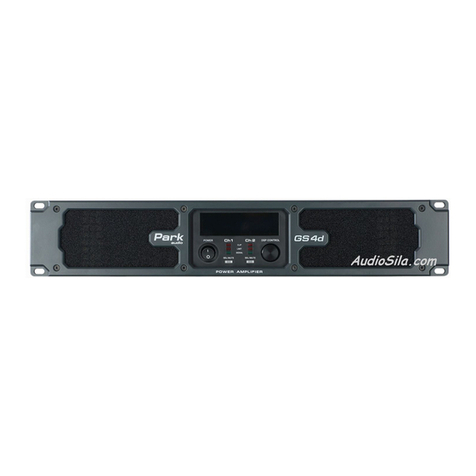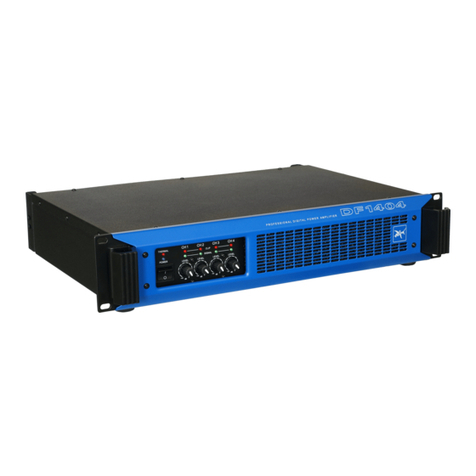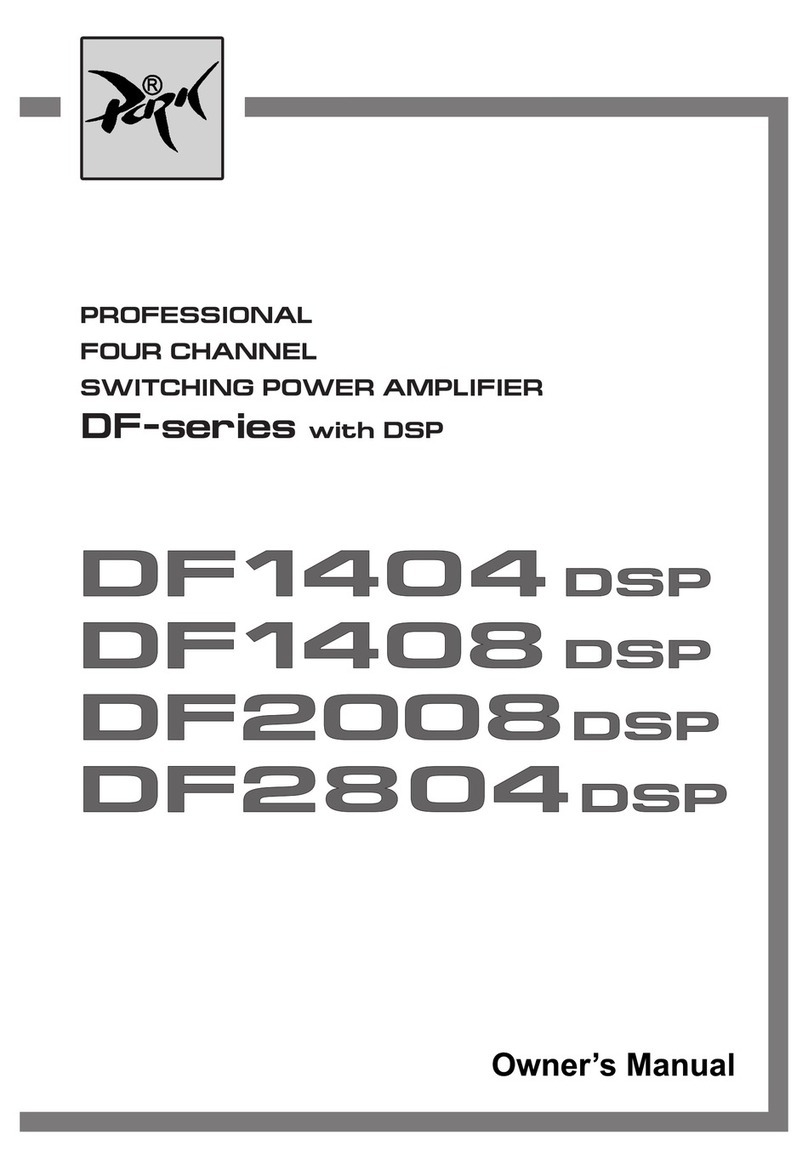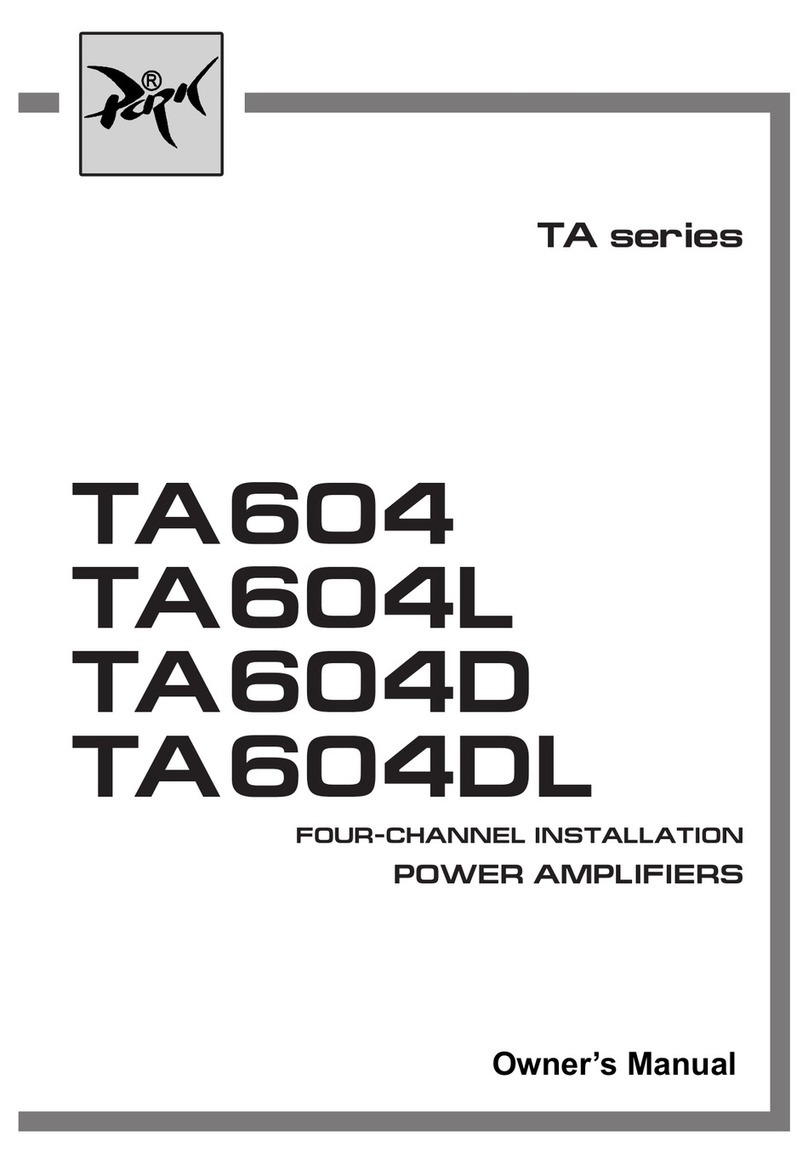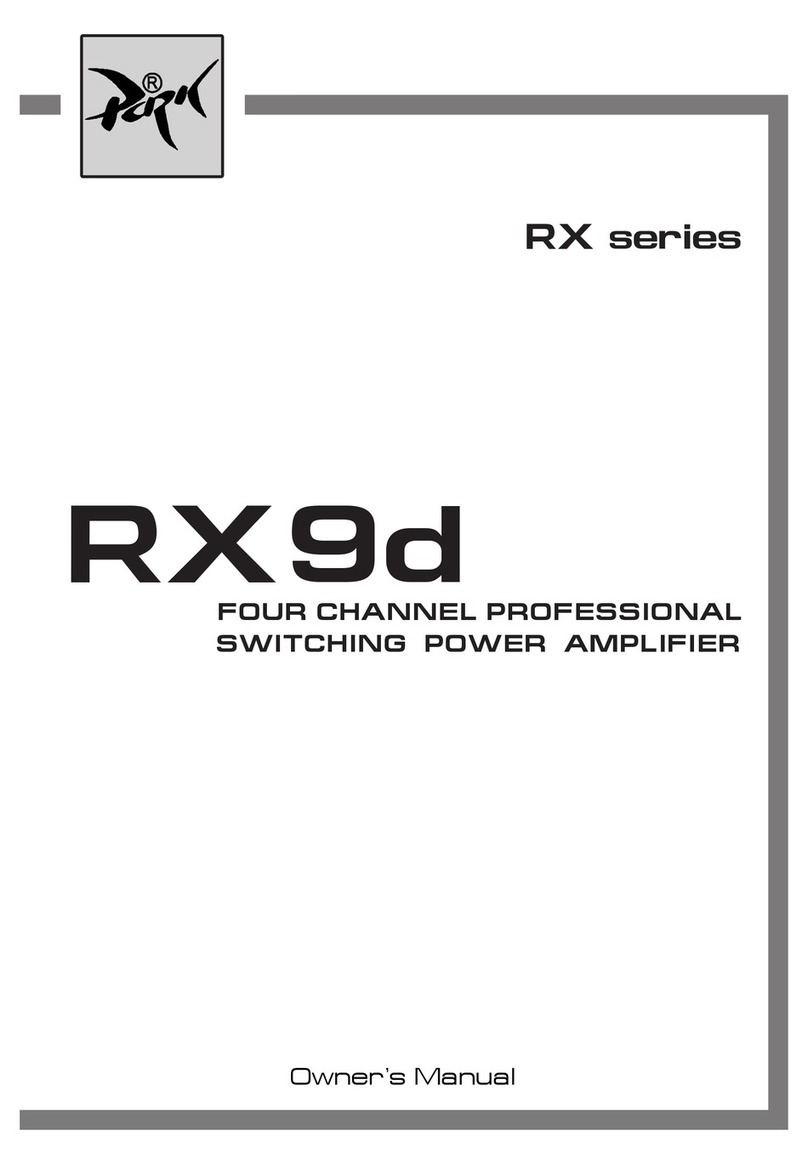
6
FUNCTIONAL FEATURES
Output Short-Circuit Protection
Individual per each channel. Protects the output stage of the power amplifier against
short-circuiting, as well as limits the output current when a maximum-level sine signal is
applied continuously to 2-Ohms loudspeaker.
Overload Protection
The double-stage overload protection system, independent for each channel, protects
the output stage and optimizes the quality sound under overload.
In the event of short overloads (for example, caused by a sharp decrease in the
complex load resistance), only the current protection of the output stage is activated. It
limits the output transistors current to safe level. Protect threshold allows to give full
output power shortly, even on case of very low load.
In case of a more continuous overload, the protection system activates the built-in
Clip-limiter, which reduces the level of the input signal.
DC Output Protection
Independent for each channel. Prevents DC damage to loudspeakers.
The amplifier’s schematics precludes transit of any clicks or noise during the
power-on/off transition process.
Protection of loudspeakers against DC damage is ensured for each channel by
individual power supply units which are disabled in the event of output DC voltage or
any powerful LF fluctuations. In case the protection system becomes active on both
channels and both power supply units become disabled, all indicators go off.
The amplifier can be restarted with the POWER toggle switch, by way of turning
the amplifier off and turning it on, about 2 minutes later again.
High Frequency Protection
Independent for each channel. Prevents any damage to HF drivers as might be caused
by non-musical signals of powerful high frequency spectrum.
Should any powerful high frequency fluctuations occur on the output either as a
result of poor contact in the input cable connectors, or being send to the amplifier’s
input by any other device (such as a crossover or mixing console), the protection
system activates the built-in optoelectronic Clip-limiter to reduce the input signal level.
Thus the protection system effectively prevents any damage to tweeters as might be
caused by non-musical signals of powerful high frequency spectrum.
Thermal Protection
Independent for each channel. Protects the amplifier’s output stage against
overheating.
The amplifier may stop functioning only in case of the fan breakdown or blocked
air flow. In this case upon reaching 85°С, the independent protection system disables
the respective channel of the amplifier. The CLIP LED goes on and the SIGNAL LED of
the affected channel goes off. The amplifier resumes its operation in the reverse order.
As soon as the amplifier cools down, the affected channels gradually regain their
amplification level up to the set value.

